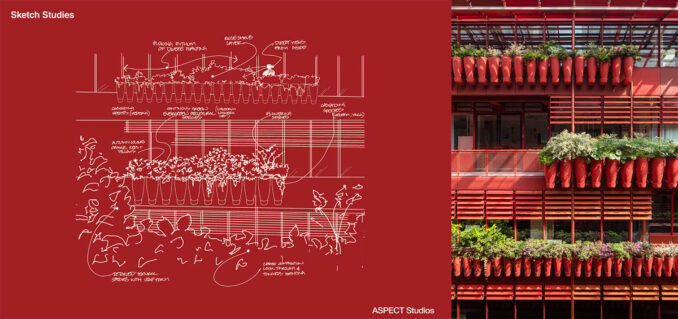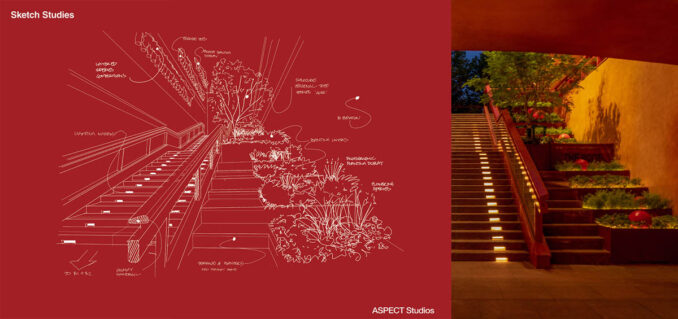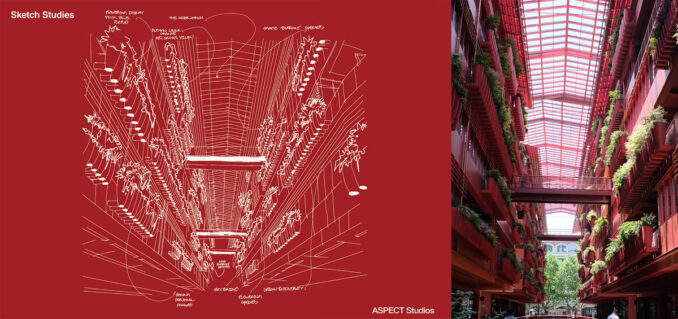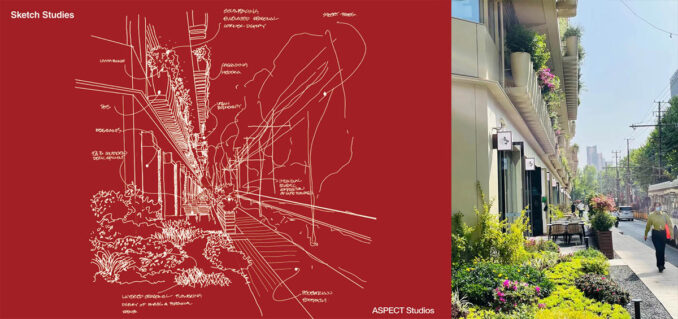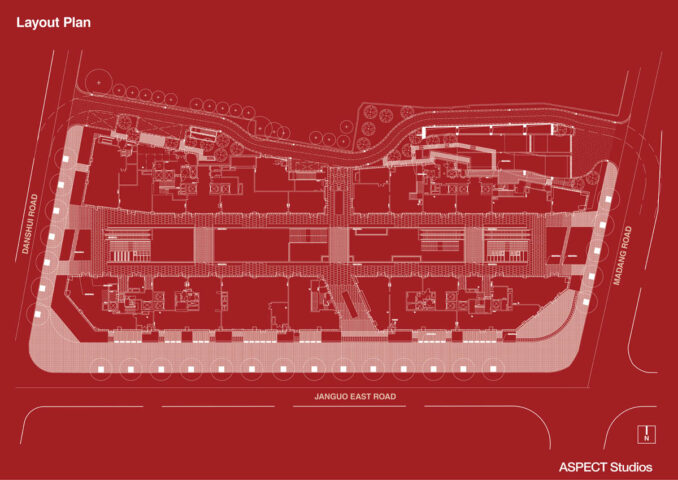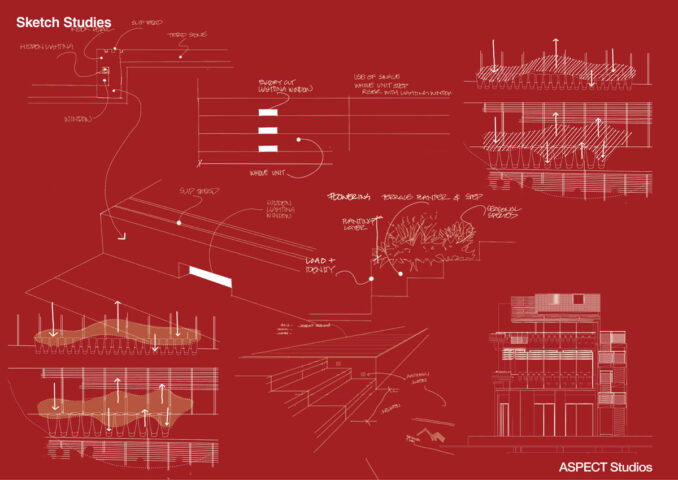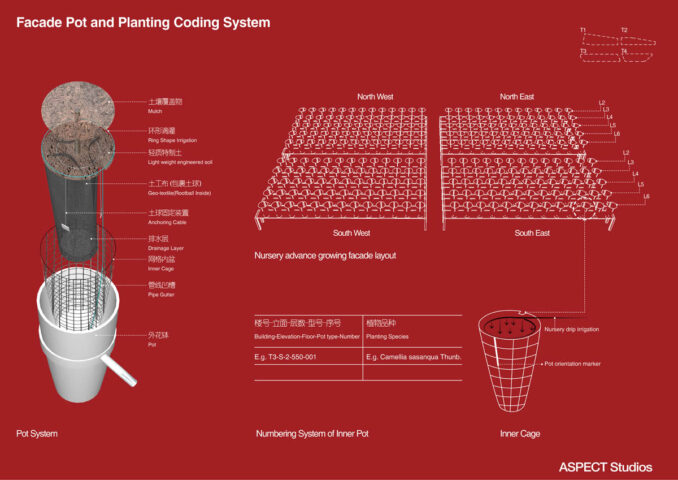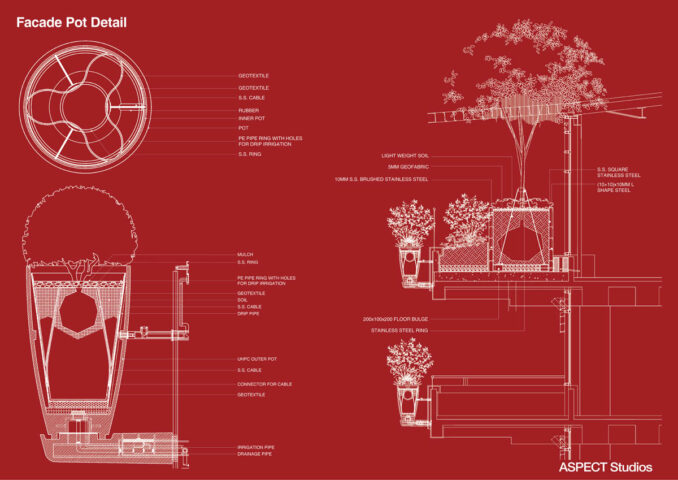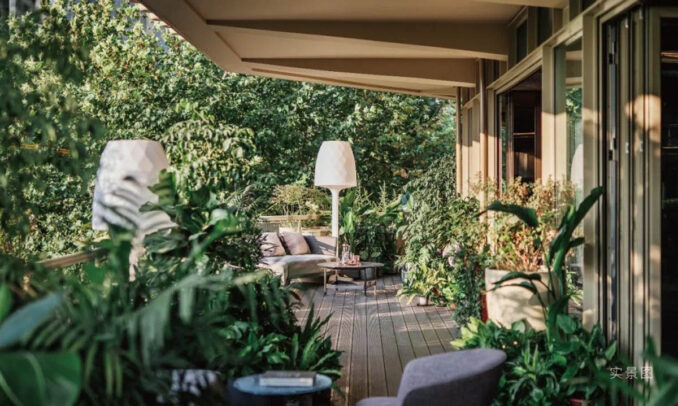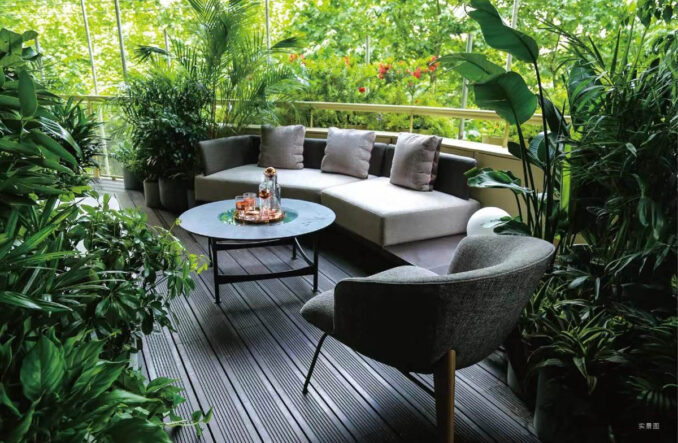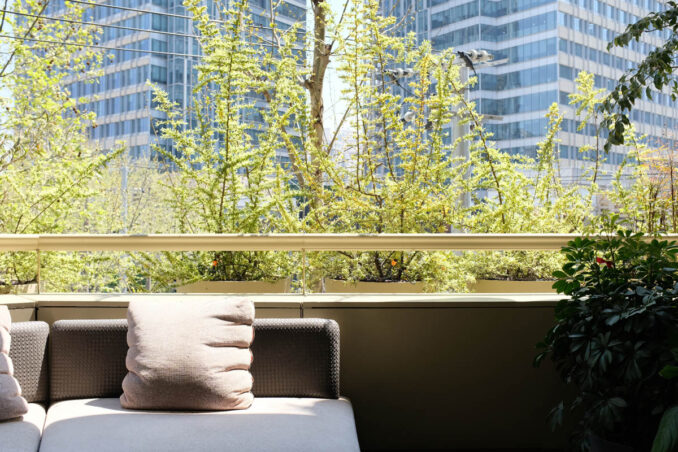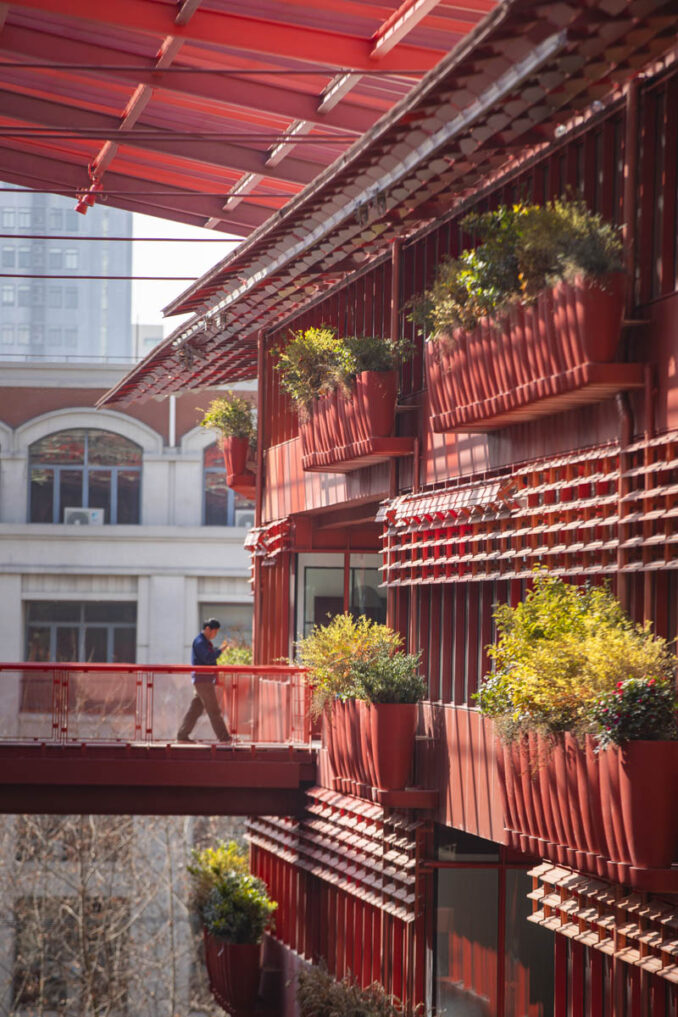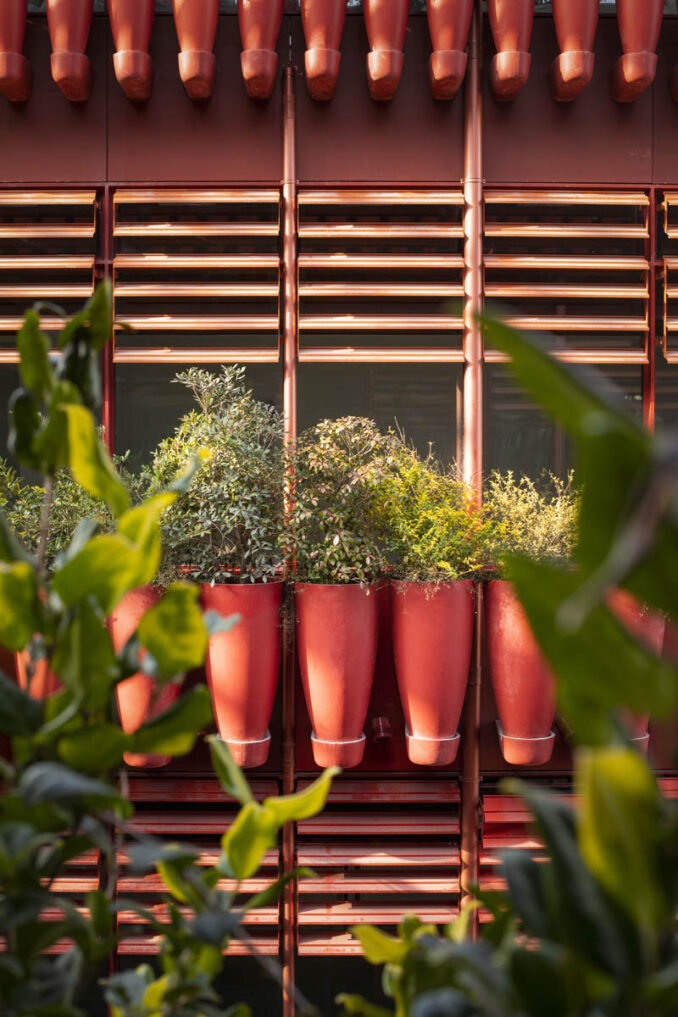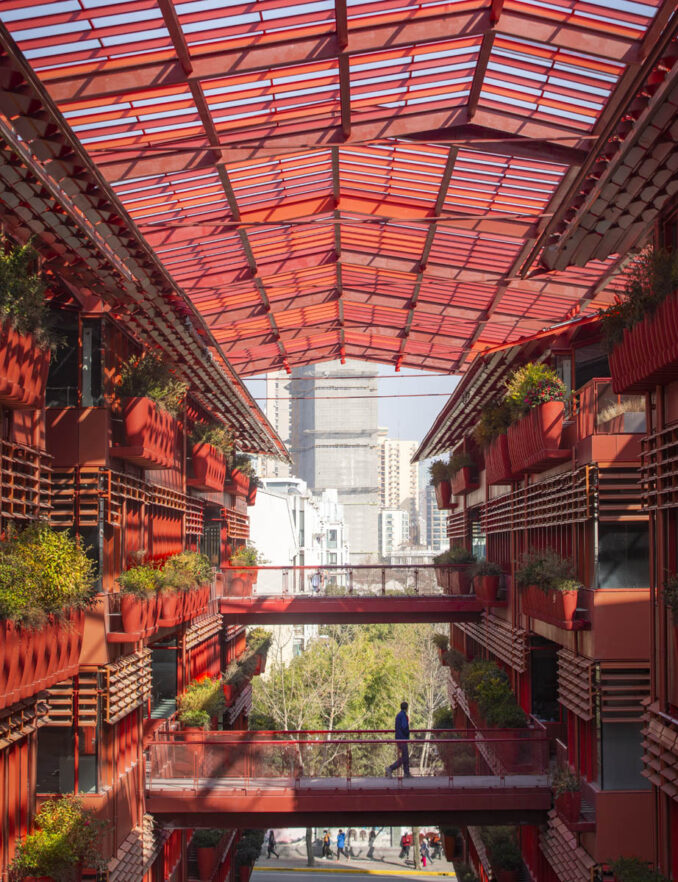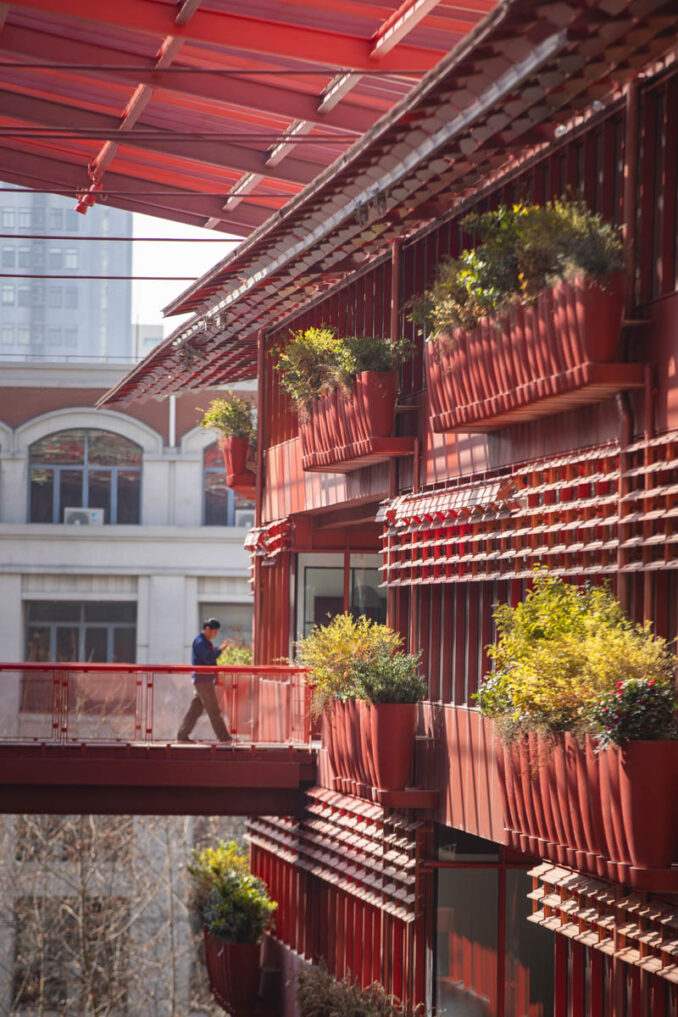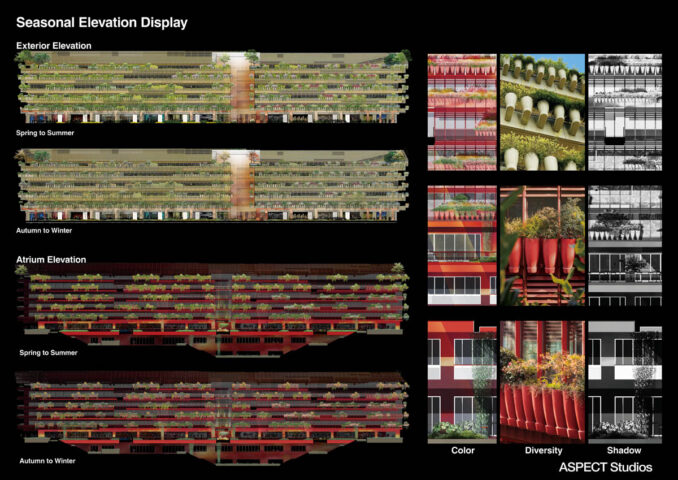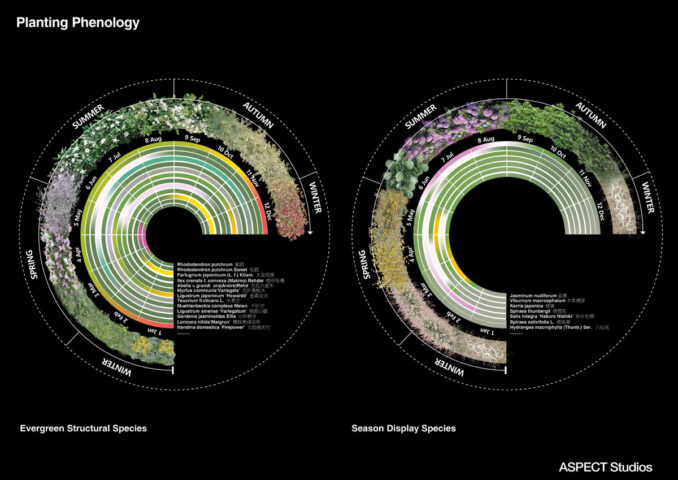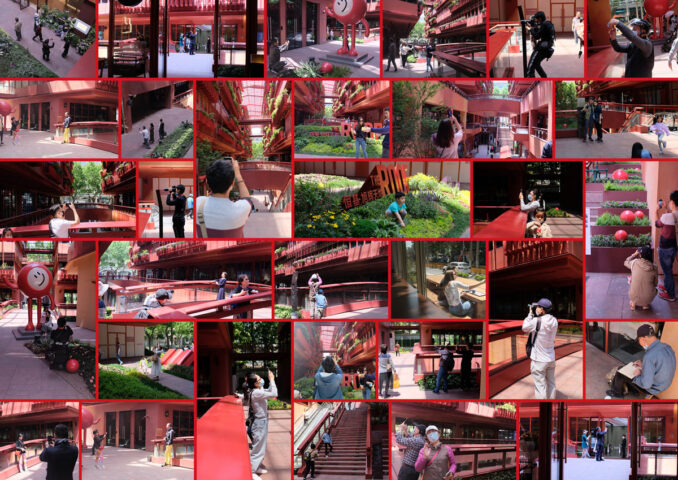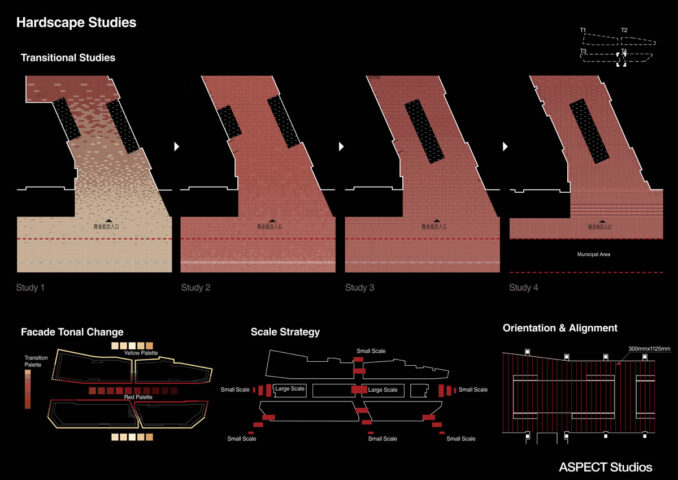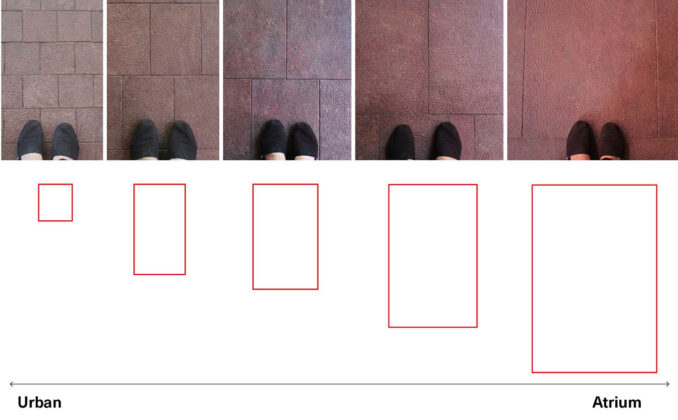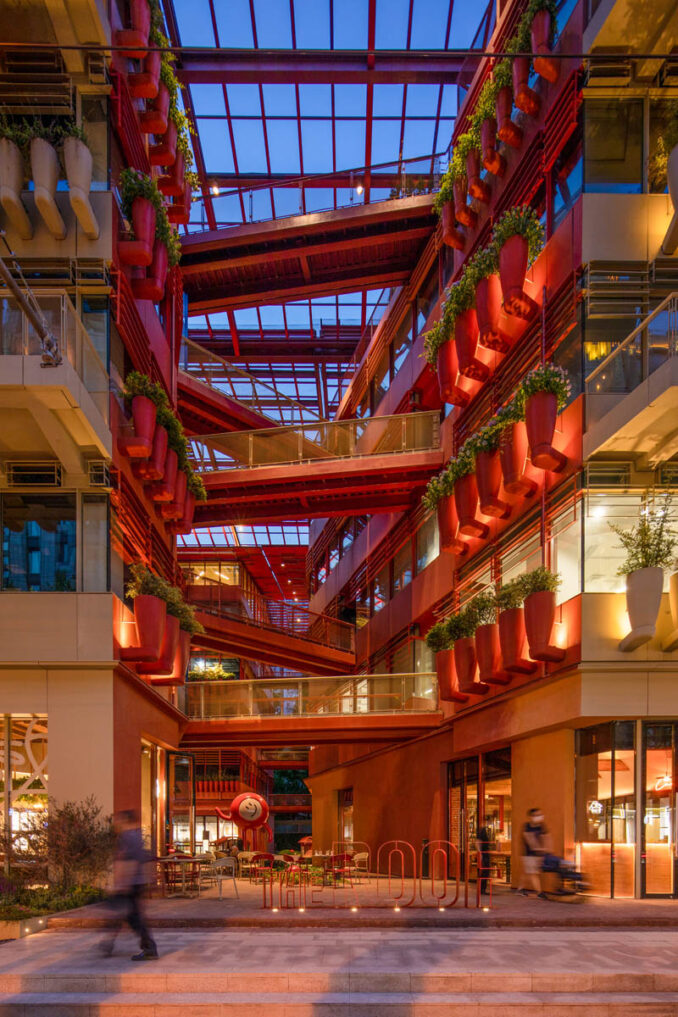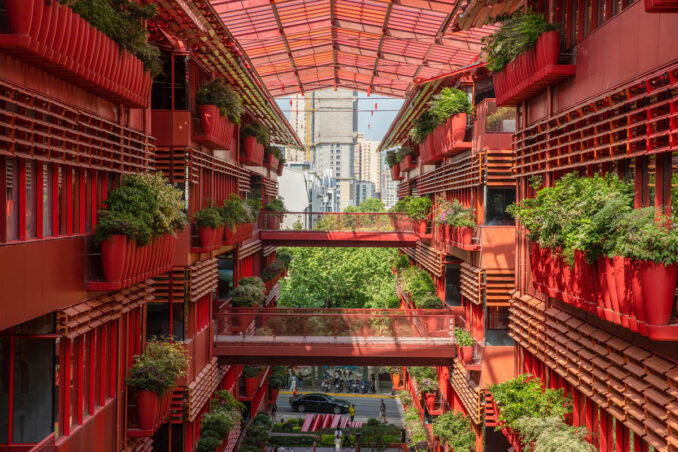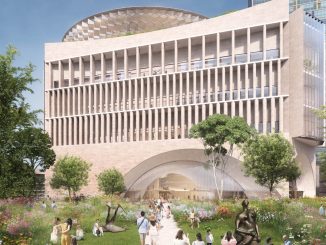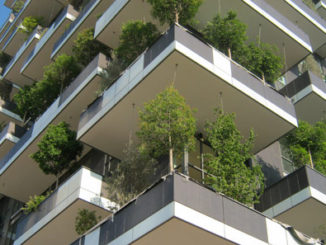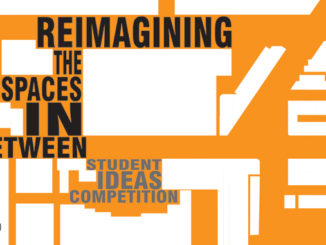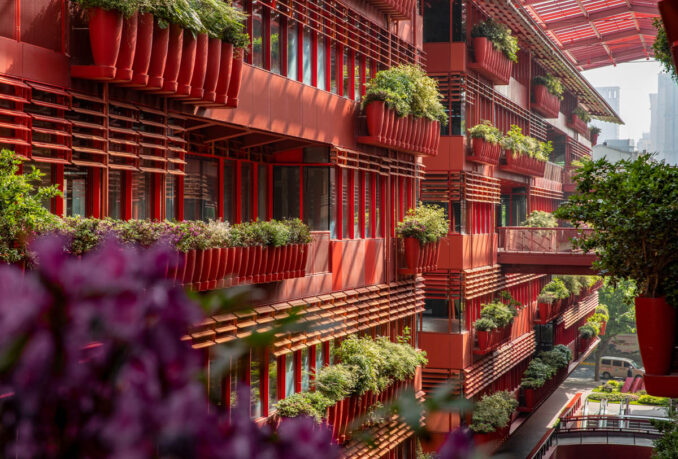
A bold biophilic break from the mundane, infused with the characteristics of its traditional context. The Roof intricately weaves its surrounding culture into its unique design, creating a model for future city spaces where people and nature thrive and a unique city destination to see and be seen in.
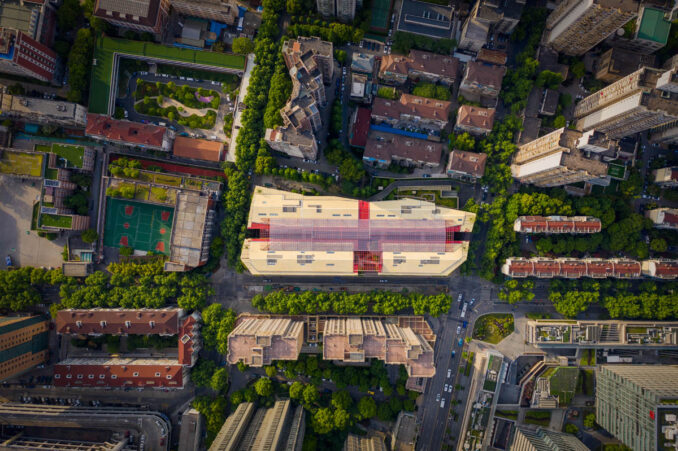
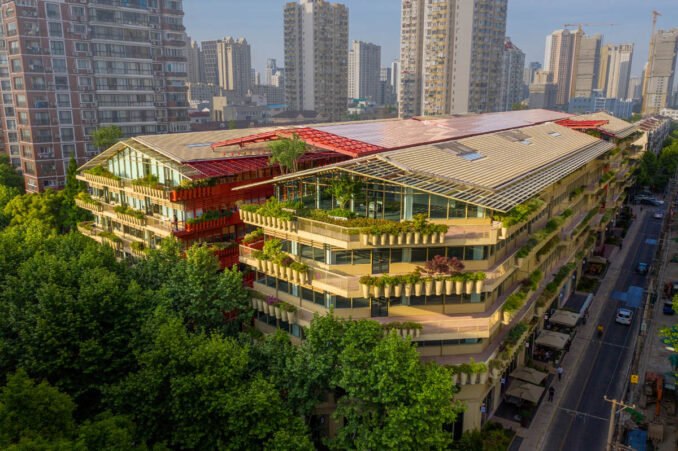
In early 2018 CIFI appointed ASPECT Studios to the project team to deliver the landscape architectural and living facade design of this iconic landmark building by Jean Nouvel. Embracing the project’s vision started with an appreciation of the site’s context, culture, and community, a few blocks away from our Shanghai studio, a very familiar place.
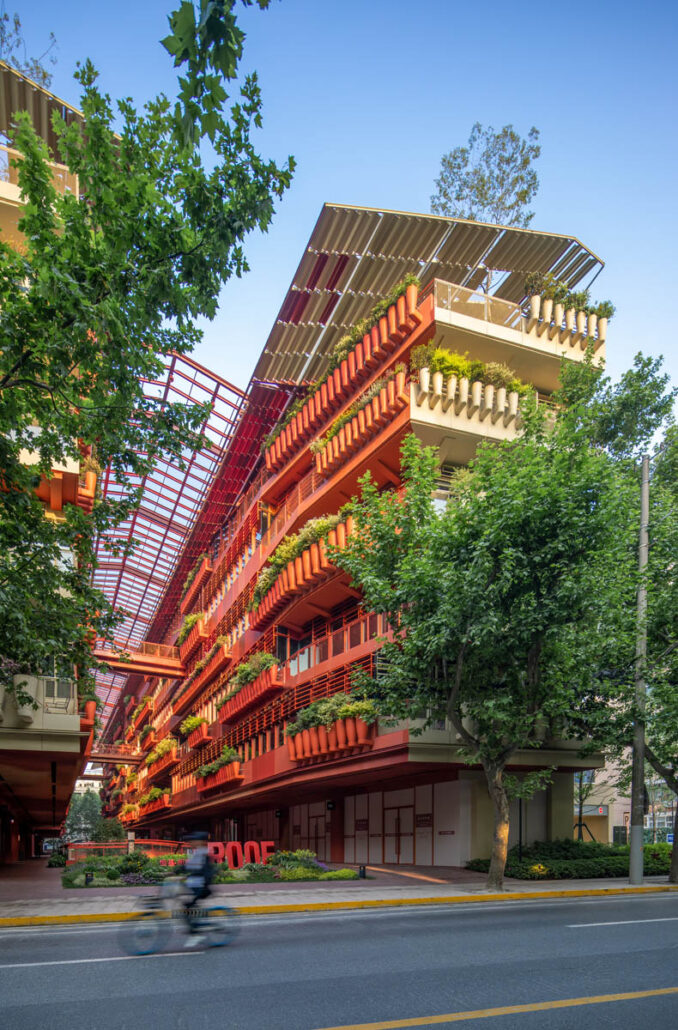
Shanghai is one of the most iconic, modern, fast-paced and densely populated international cities in the world. By taking a step away from the busy streets into the traditional backstreets (Li’long), you will find a completely different experience where there is much to admire. A place that is quintessential to the soul of Shanghai, with its own unique characteristics, the pace of life, community, and culture within the complex 100-year-old historic laneways.
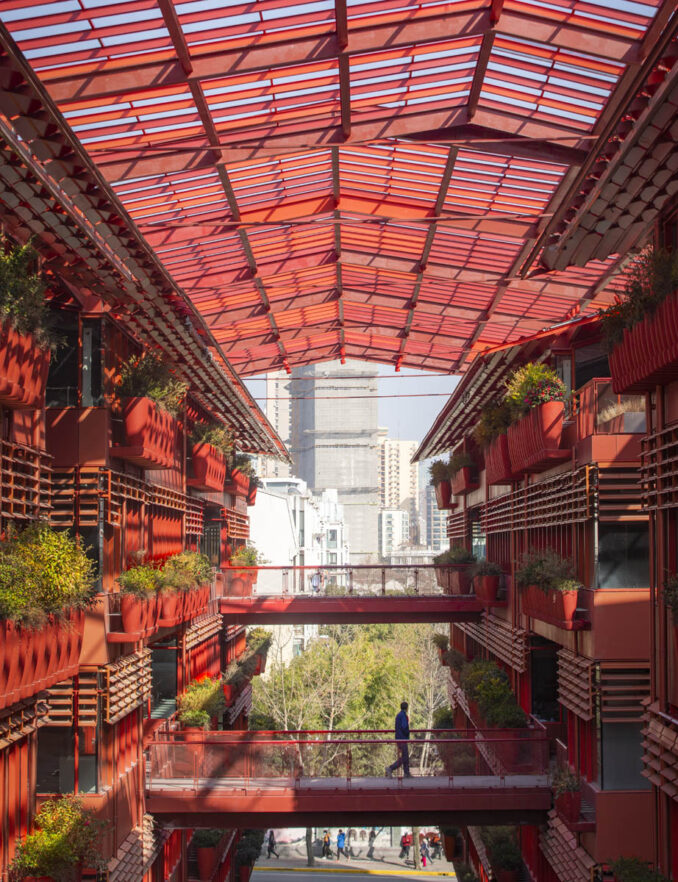
The Journey
The project’s design started with a bold and unique architectural design concept by Jean Nouvel, a culturally inspired human-scale place of experiences.
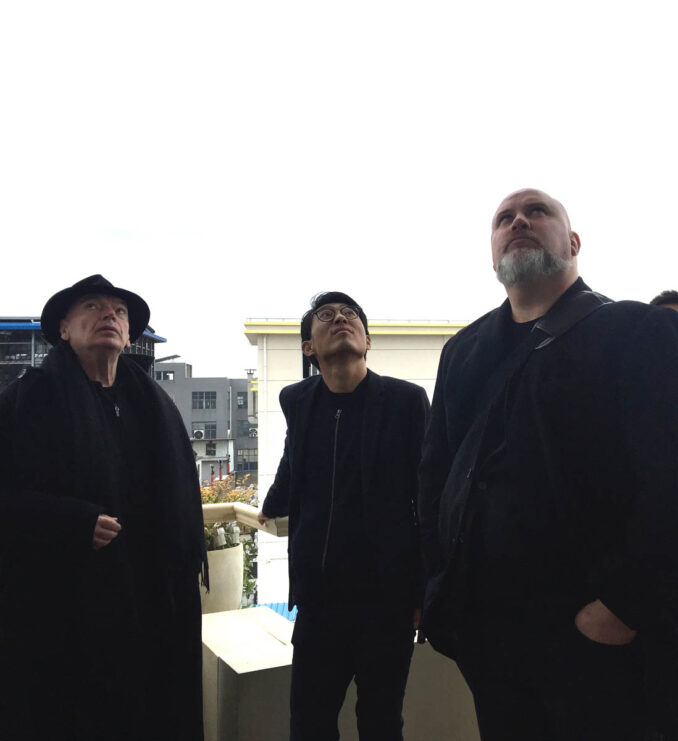
An evidence-based design approach was undertaken to inform the design and the creative process to support the vision, helping to inform decisions on human comfort, planting species, biodiversity, and seasonal change. The development of material palettes and details that reflected the character of place whilst created something new. Through the delivery of the project, a 1 to 1 scale mock of the building facade was constructed on the outskirts of Shanghai, allowing for detailed testing and studying the complexities of the design, systems and technical interfaces between landscape, architecture, structural, MEP, Irrigation, Planting specialists.
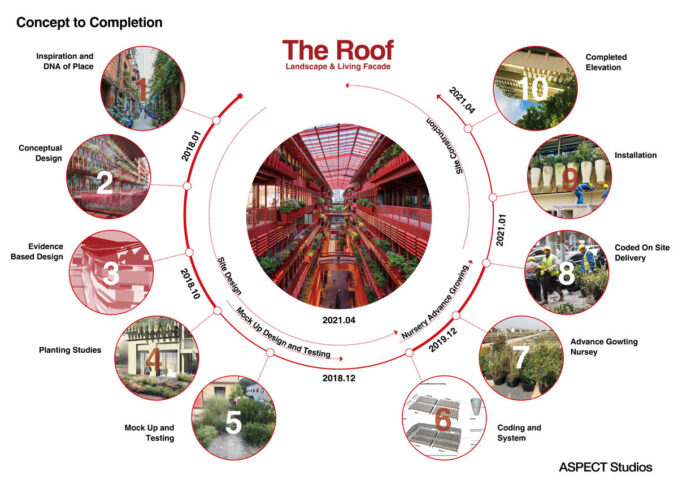
To ensure robust settling in an instant effect from day one, an advance grown nursery strategy was implemented to pre grow each pot species combination a season in advance.
DNA of Place
Unlike the hustle and bustle of contemporary Shanghai, the human scale environment of the Li’long (back streets) naturally takes people to a slower pace of life. These vivid red brick and beige framed linear corridors and the abundance of landscape in potted plants that climb, cascade, and thrive on every surface, corner, entrance, balcony, and ledge create the natural forming and spontaneous biophilic environment intrinsic to the LiLong. The Roof represents a new era of contemporary urban development within its authentic cultural context.
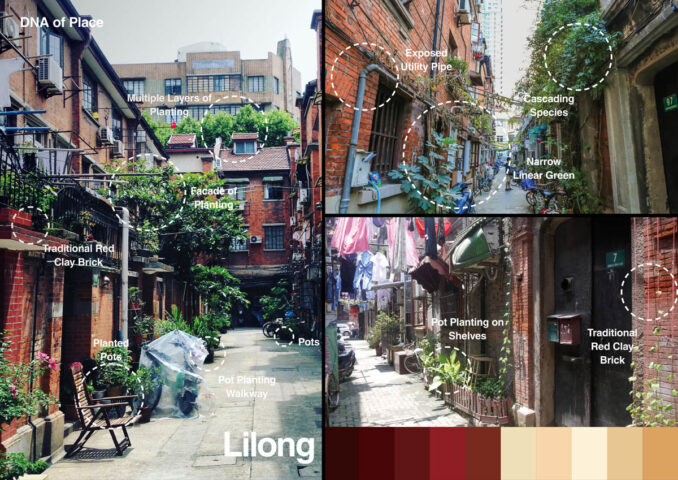
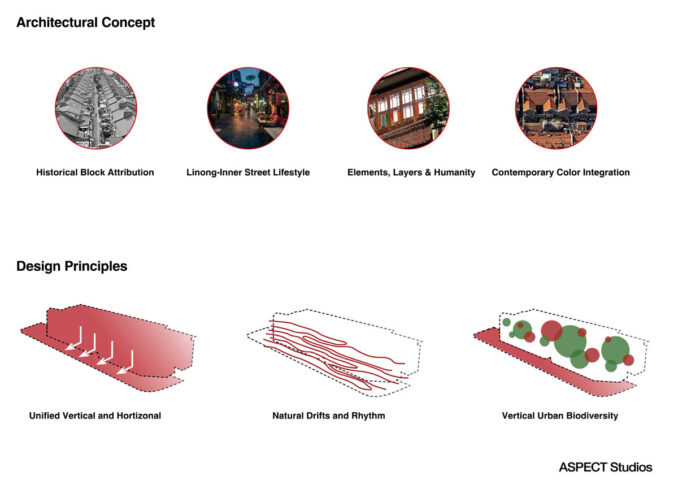
Surrounded by vibrant commercial spaces, lifestyle and cultures, the design is respectful to the scale of the surrounding urban context yet outstanding in the depth of detail and individuality it brings to the area. Embracing the traditional characteristics and qualities of the Li’long, one of the most significant points of the identity of the project is the living façade elevations.
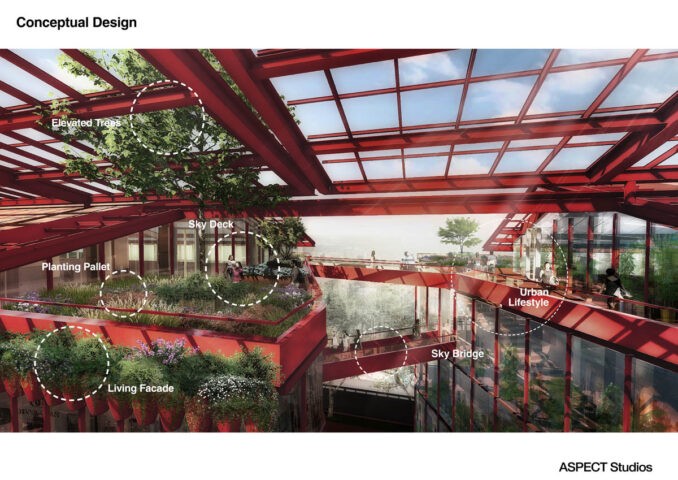
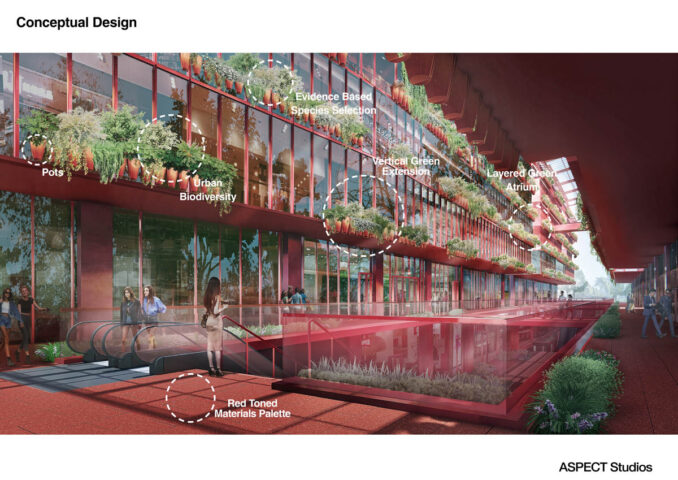
Across the project, there is a total of ten facades. On the façades, there are horizontal arrangements and clusters of planting; each cluster is a collection of curated species, combining shrubs and draping plants, suitable to the micro-climate conditions. The clusters create an ever-changing seasonal display from the atrium to the outer façades. The integration of the living facade has strongly encouraged wildlife and pollinators into the heart of a dense urban environment, which creates a harmonious place for people and nature.

Positioned as an iconic project of contemporary office and commercial hub, it invites visitors and office workers into a richness of greenery from within and outside the space. At the top of the building, sky deck roof gardens with gathering spaces generously planted with trees open out to the sky, creating a shared terrace with an open view to an impressive urban skyline.
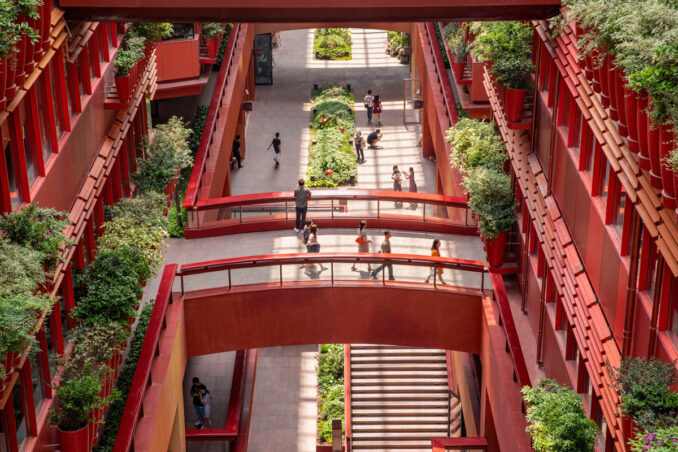
Through a unique response to culture, climate, context, and the environment whilst considering the needs of future urban lifestyle, ‘’The Roof’’ sets out to define a new perspective of contemporary urban experience, a biophilic office and commercial environment that draws on the characteristics of Li’long, embracing the thought-provoking characteristics of its surrounds.
“The Roof sets out to define a new perspective of contemporary urban existence, a biophilic office and commercial environment that embraces nature as its identity, encourages urban biodiversity and provides a moment of delight within the urban environment.”
Stephen Buckle – Studio Director, ASPECT Studios.
Evidence-Based Design
The facades’ design was a collaborative team effort using critical analysis to determine various climate conditions of each elevation to curate suitable, resilient, and aesthetically pleasing planting palettes to achieve the highest sustainable outcomes.
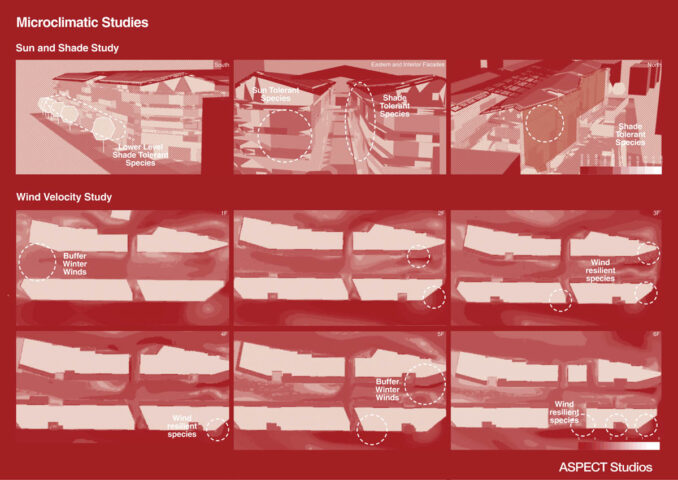
At the early stages of the design, the team collected data on solar, wind, sun, and other micro-climate-related factors covering both buildings and surroundings. This data was digitally analyzed in depth using the latest micro climatic modelling tools. This analysis informed the detailed selection of plant species suitable for each facade pot’s exact conditions, orientation, elevation, and pot size.
Within each facade pot is an integrated drip irrigation ring; this is positioned under the top layer of mulch to ensure water efficiency and reduce evaporation.
Biophilic Design
The Roof’s planting is specifically positioned to ensure it is viewed from the inside, allowing each office worker to enjoy a unique environment immersed in nature and greenery. Increasing psychological benefits and overall well-being by having their senses stimulated in the way that nature intended.
The connection to nature is vital in the workplace. Incorporating green space, natural light, and plants have been proven to help with individual health and well-being, ensuring better employee satisfaction, office productivity, and greater creativity, motivation, and efficiency.
Urban biodiversity and seasonal change
Planting species have been selected to attract pollinators and increase urban biodiversity whilst embracing seasonality creating an all-year display of changing natural colors, tones and greenery. From ground level to the upper garden’s birds, bees, butterflies, and dragonflies have already been spotted.

In summer, whilst in leaf, the plants create shade to the interior, reducing heavy reliance on air conditioning. In winter, the deciduous species drop their leaves to help to increase natural light to the interior, while the soil assists to create an additional layer of thermal buffer against the cold air.
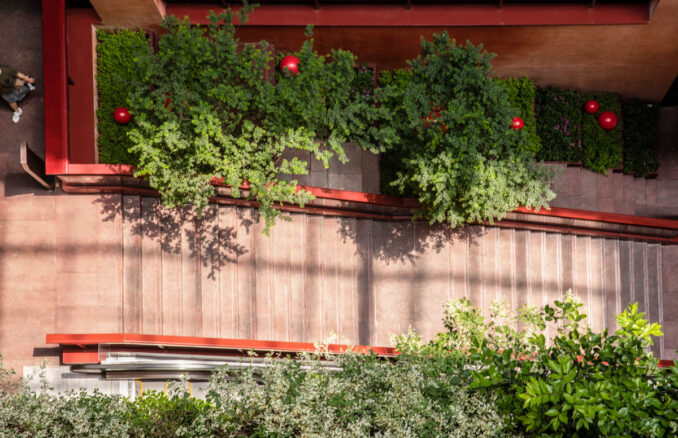
Species were selected for each location, aspects, and elevation to create an environment with natural composition and rhythm in elevation and seasonal rhythm. Each plant species performs different and defined roles, including seasonal change, evergreen structure and flowering display.
Seasonal Change Species – helping to increase urban biodiversity, the design intended to create a living facade that reflected the seasonal characteristics native to Shanghai. The following species were selected to emphasise seasonal change through the seasons, embrace the beauty of plants in transition, and create beautiful layers of flowering displays at different times of the year. The following species helped to define ever-changing season display: Hydrangea macrophylla, Spiraea salicifolia, Salix integra ‘Hakuro Nishiki’, and Spiraea thunbergia.
All Year Structural Species – using a range of evergreen species to ensure to create a green framework for the design, these consisted of shrubs and cascading species suitable to the climatic condition. The following species helped create an all year round green framework: Farfugrium japonicum, Rhododendron pulchrum, Ilex crenata f. convexa, Myrfus communis‘Variegata’, Nandina domestica ‘Firepower’, Ligustrum japonicum ‘Howardii’, Abelia × grandiflora, Muehlenbeckia complexa, Teucrium fruticans, Ligustrum sinense ‘Variegatum’, Gardenia jasminoides, Rhododendron pulchrum, and Lonicera nitida‘Maigrun’.
Cascading Rhythm Species – to create movement in the facade, we seek to create a cascading rhythm by using plants in natural drifts. The plant species used to support this ideas were: Hedera nepalensis var. sinensis, Trachelospermum jasminoides, Vinca major var. variegate, and Muehlenbeckia complexa.
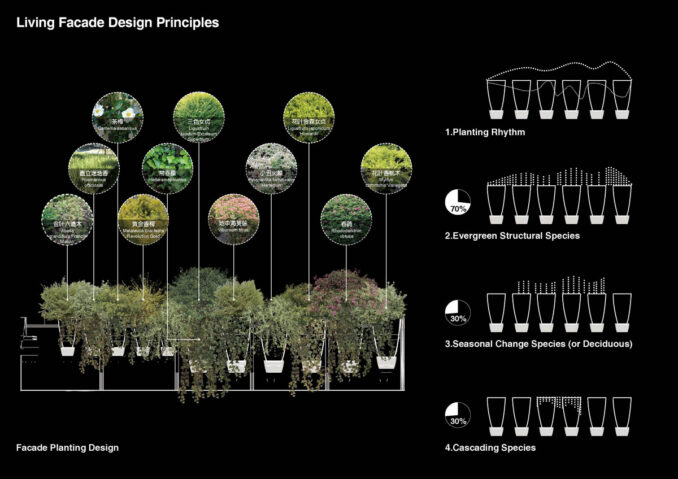
See and Be Seen
Within the short time since its opening, The Roof has rapidly become one of the most photographed locations in Shanghai, a place to see and be seen requested by crowds of people coming to experience the three-dimensional immersive experience. Influencer and KOL as the place to be seen with vibrant competition and diversity of spaces, and family capturing moments of delight with their children and relatives.
Red Stone Carpet
To strengthen the overall design and impact, we studied and developed a materials pattern that will complement the tone and color of the facade. Undertake taking studies that looked at the transition from outside to inside from urban to human scale, tonal changes, and material unit scale transitions to create a subtle response to transitioning. The final selected design is delivered in red porphyry, with a transition in the scale of smaller units on the urban streetscape to larger units in the inner atrium.
Sky Decks
There are elevated sky decks at various locations around the project, intimate social spaces that offer the opportunity to be outside, at an elevated level surrounded by the combination of desk planting, façade planting, and surrounding street tree canopies. The combination of planting layers creates an immersive experience that positions visitors within an abundance of greenery, with views across the surrounding tree canopies.
Offsite advanced grown planting for immediate impact – to ensure control of the planting and limit the failure of plants after installation, we utilised a coding system for each façade, elevation, orientation, floor, pot position and plant species.
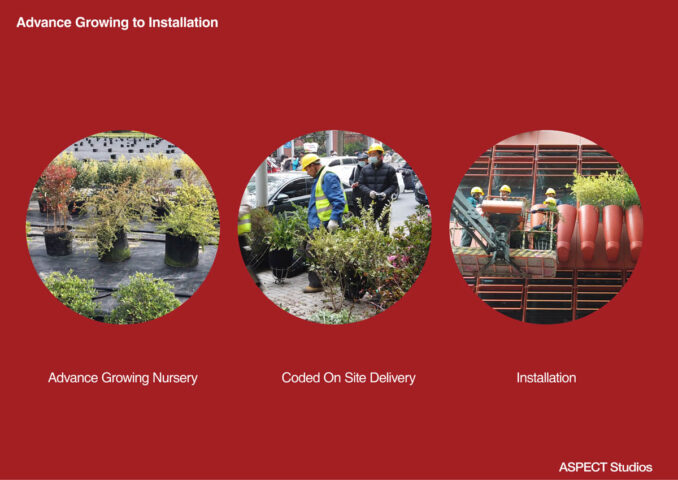
To ensure plant quality and the overall look of the facade, the plants were advance grown into the inner pot, and that was used as part of the delivery and installation process. This approach limited plant failure and ensured an immediate impact at the grand opening.
The Roof
Location: Jian Guo Dong Road, Shanghai Huangpu District, Shanghai, China
Architecture: Ateliers Jean Nouvel
Landscape Architecture: ASPECT Studios
Principal Landscape Architect: Stephen Buckle
Design Team: Derek Chen, Sam Xu, Suki Ye, Lemon Liao, Yan Luo, Phannita Phanitpharadon, Alex Cunanan de Dios
Local Architecture Engineer: Tianhua Group
Local Landscape Design: Shanghai JS.phase Landscape design Co.,Ltd
Local Landscape Engineer: Triones Landscape
Façade Design: RFR
Interior Design: Ateliers Jean Nouvel, G-ART
Structure Engineer: P&T Shanghai
Client: CIFI Group Co., Ltd.
Photography: RAW VISON Studio (Dong Liang), 10 Studio, Stephen Buckle (ASPECT Studios), G-ART

